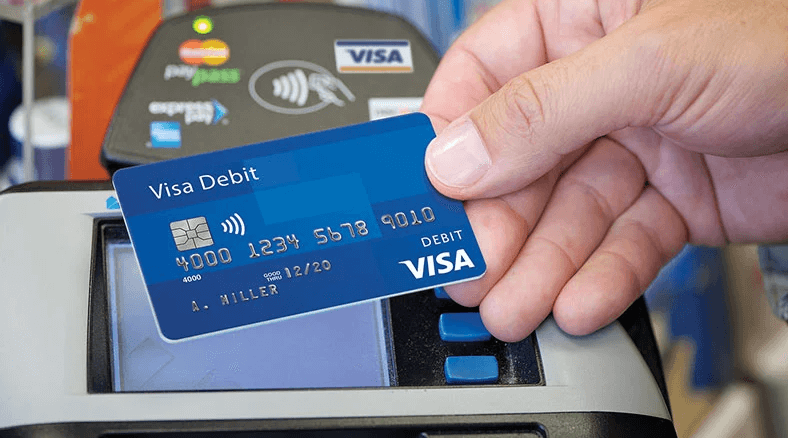
How Contact Card Work With EMV Payment Systems?
Today, consumers and businesses alike seek reliable, convenient payment methods that are also fraud-proof. Contact cards, which support EMV chips, play a crucial role in meeting these needs. Unlike traditional magnetic stripe cards, contact cards use embedded chips to store and transmit payment information securely. This technology ensures that every transaction is encrypted and verified, minimizing the risk of counterfeiting or unauthorized use. We will explore how contact cards work with EMV payment systems, their advantages, and practical considerations for businesses and consumers.
Introduction to EMV Payment Systems
EMV, which stands for Europay, MasterCard, and Visa, is the global standard for secure payment transactions. It relies on embedded microchips to store, process, and protect payment data. Unlike traditional magnetic stripe cards, EMV cards communicate securely with terminals to prevent fraud. Contact Card technology is one of the primary methods for interacting with EMV systems. These cards require physical insertion into a terminal to establish a secure connection. This ensures the chip and reader exchange encrypted information before approving a transaction—many financial institutions worldwide mandate EMV Contact Card usage due to its proven fraud-reduction capabilities. Consumers increasingly trust EMV-enabled cards, which have driven worldwide adoption over the last decade.
How Contact Cards Store and Protect Data
Contact Cards contain an embedded microchip that stores sensitive payment information, including account numbers, cryptographic keys, and transaction history. The chip uses advanced encryption protocols to prevent unauthorised access. Each transaction generates a unique cryptogram, making it extremely difficult for fraudsters to replicate. According to EMVCo, chip-based transactions reduce counterfeit card fraud by up to 80% compared to magnetic stripe payments. Banks and payment networks have seen measurable improvements in fraud prevention since the widespread adoption of Contact Cards. This security feature is essential in retail, hospitality, and banking industries, where high transaction volumes occur daily. Users also benefit from dynamic data authentication, which enhances transaction security.

The Transaction Process Explained
When a Contact Card is inserted into an EMV terminal, the chip communicates with the terminal to verify authenticity. The terminal sends a request for encrypted transaction data. The card returns a unique cryptogram confirming its authenticity. The payment processor validates the cryptogram and either approves or declines the transaction. This real-time verification adds a layer of protection unavailable in swipe-based systems. The process typically takes only a few seconds while significantly reducing fraud risk.
Additionally, EMV terminals log transaction details for audit purposes. Retailers report fewer chargebacks and higher consumer confidence when using EMV Contact Cards. Training staff to guide customers during insertion ensures smooth, reliable transactions.
Differences Between Contact and Contactless EMV Cards
While Contact Cards require insertion, contactless EMV cards use near-field communication (NFC) to transmit information wirelessly to terminals. Contactless cards are faster for small-value transactions but may not provide the same level of interaction for high-value purchases. Contact Cards remain the preferred choice in many regions for secure, high-value transactions due to full chip engagement. Businesses often deploy both types to provide flexibility while maintaining strong security. Combining contact and contactless options also improves consumer convenience. Research indicates that hybrid systems reduce transaction time while maintaining high levels of fraud protection. Organisations must evaluate transaction patterns to determine which card type best suits their operations.

Hardware Requirements for Contact Cards
To use Contact Cards with EMV systems, merchants need terminals compatible with chip-reading technology. These devices must meet EMV standards to ensure encrypted communication and correct processing. Older terminals designed for magnetic stripe cards cannot process Contact Cards correctly. Upgrading to EMV-compliant hardware involves installation, configuration, and software updates. Many banks provide certification and technical support to guarantee proper integration with Contact Card technology. Hardware reliability is critical, as terminal failures can disrupt business operations. Regular maintenance and firmware updates help prevent compatibility issues and ensure a seamless payment experience for both merchants and consumers.
Benefits of Using Contact Cards in EMV Systems
Contact Cards offer several advantages for businesses and consumers alike. They reduce fraud, support multi-currency payments, and ensure transaction integrity. Consumers gain confidence knowing their sensitive data is encrypted and verified for every transaction. Merchants benefit from lower chargeback rates and reduced risk of counterfeit card usage. According to Visa’s 2023 fraud report, regions that adopted chip-based Contact Cards saw a notable decline in card-present fraud cases. Additionally, Contact Cards support interoperability with other secure systems, such as loyalty programs and corporate access systems. Their robust security features provide long-term value in financial and operational terms.

Common Challenges and Solutions
Despite their advantages, Contact Cards and EMV systems face challenges. Card wear, chip damage, and terminal misalignment can cause transaction failures. Merchants should provide clear instructions for insertion and regularly maintain terminals. Deploying hybrid readers that support both contact and contactless EMV cards can minimise failed transactions. Protective sleeves and card replacement programs help extend the lifespan of cards. Proper training ensures staff and consumers understand best practices, reducing errors and improving overall satisfaction. Some businesses also monitor transaction failures to identify patterns and proactively address root causes. Proactive measures maintain system reliability and enhance customer trust.
Integrating Contact Card for Secure Payments
Contact Cards play a vital role in EMV payment systems by enabling secure, encrypted transactions. Their physical chip interaction ensures authenticity and protects against fraud. Businesses integrating Contact Card solutions into their EMV infrastructure improve transaction reliability, customer trust, and overall security. As payment technology evolves, Contact Cards remain a cornerstone of secure card-present transactions, supporting merchants, banks, and consumers worldwide. By combining strong security, compatibility, and user convenience, Contact Cards will remain a key tool for safe, reliable payments in the coming years.


